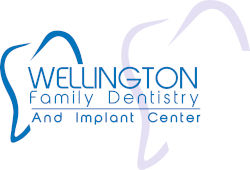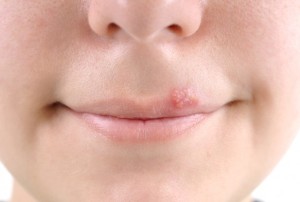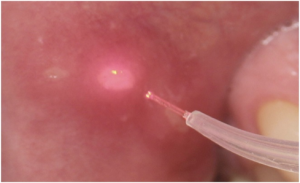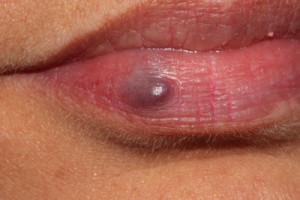Laser Treatment of Cold Sores
A cold sore, also known as a fever blister, is caused by a virus called HSV-1. It is typically seen as a cluster of small blisters which quickly rupture to form small ulcers. Over time, the ulcerations extend to the skin around the mouth and become covered with a crusting or scab.
Many lesions are commonly preceded by an itching, burning or tingling sensation. The lesions are often painful and can come back on a regular basis. The lesions begin quickly, and can be triggered by sunlight, trauma, stress, or a weak immune system. The blister and ulcer phases of the infection are contagious and usually heal in 7-10 days.
What is a canker sore?
A canker sore is an autoimmune response that damages the skin inside the mouth. It appears as a white or yellow center with a red border. Cankers can be seen on the inside of the lips or cheeks, on or underneath the tongue, and on the back of the throat.
Canker sores can vary in size, from small (less than half of a centimeter) to large. They are usually associated with physical or emotional stress, become painful, and commonly come back in multiple areas.
Treating a Lip Hemangioma
A hemangioma is a benign (noncancerous) tumor comprised of blood vessels. There are many types of hemangiomas, and they can occur throughout the body, including in skin, muscle, bone, and internal organs.
Most hemangiomas occur on the surface of the skin or just beneath it. They often develop on the face and neck, and can vary greatly in color, shape, and size. Hemangiomas very rarely become cancerous and do not require any medical treatment. However, some lip hemangiomas can be disfiguring. Through laser treatment, we can safely remove a hemangioma located on the lip or near the mouth.
How does laser treatment work?
The laser heats the lesion in order to kill the virus and stimulate your body’s healing processes. It does not touch the skin so there is no need for any numbing of the area. The heat is controlled by keeping the tip of the laser several millimeters away from the tissue, taking care not to overheat the ulcer. The treatment lasts just a few minutes and typically the patients feels better immediately following the treatment.



